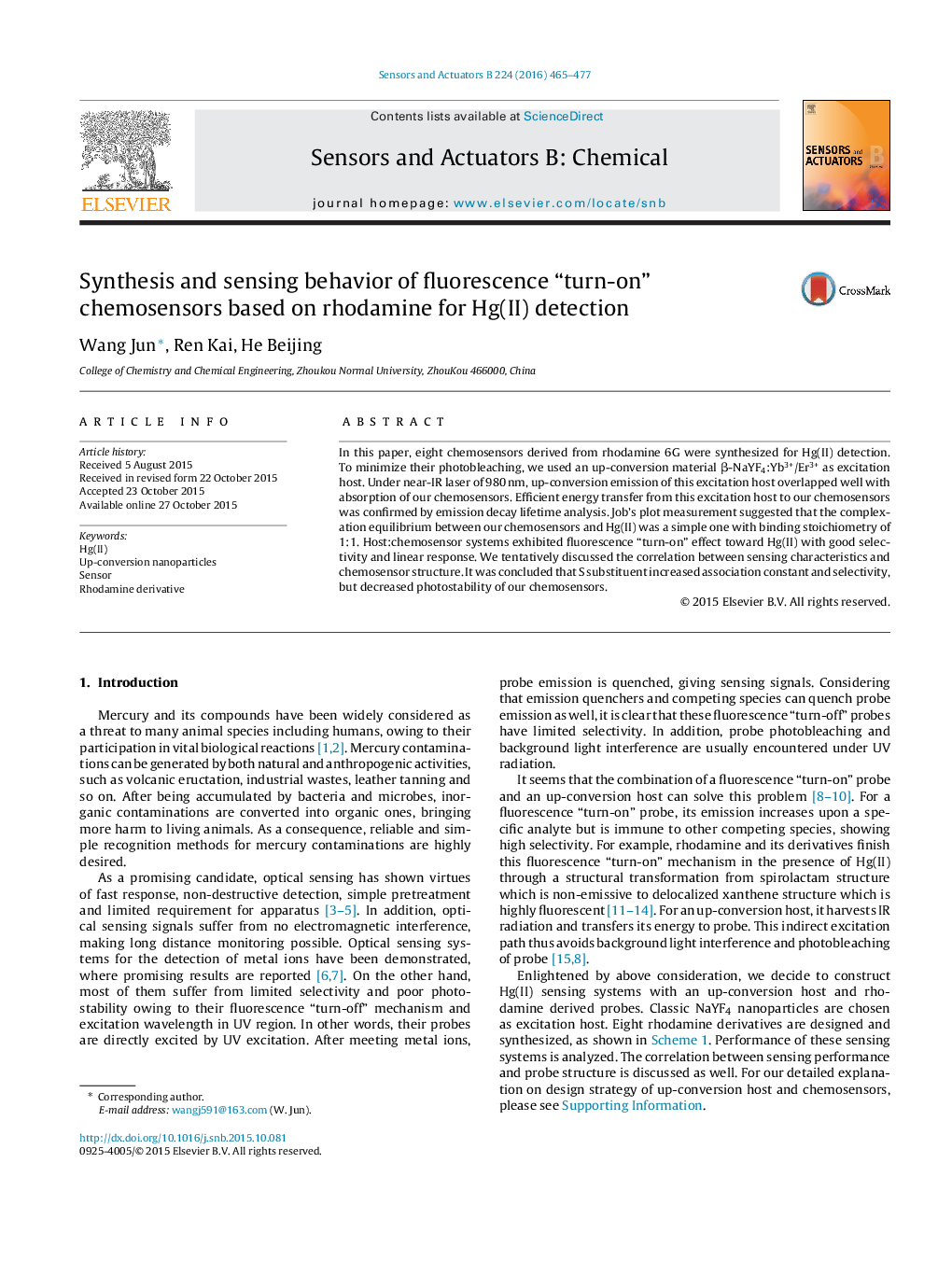| Article ID | Journal | Published Year | Pages | File Type |
|---|---|---|---|---|
| 750511 | Sensors and Actuators B: Chemical | 2016 | 13 Pages |
•An up-conversion material was used as excitation host with high efficiency.•A complexation equilibrium with binding stoichiometry of 1:1 was found.•Emission “turn-on” effect with good selectivity and linear response was observed.•S-substituent increased association constant and selectivity.
In this paper, eight chemosensors derived from rhodamine 6G were synthesized for Hg(II) detection. To minimize their photobleaching, we used an up-conversion material β-NaYF4:Yb3+/Er3+ as excitation host. Under near-IR laser of 980 nm, up-conversion emission of this excitation host overlapped well with absorption of our chemosensors. Efficient energy transfer from this excitation host to our chemosensors was confirmed by emission decay lifetime analysis. Job's plot measurement suggested that the complexation equilibrium between our chemosensors and Hg(II) was a simple one with binding stoichiometry of 1:1. Host:chemosensor systems exhibited fluorescence “turn-on” effect toward Hg(II) with good selectivity and linear response. We tentatively discussed the correlation between sensing characteristics and chemosensor structure. It was concluded that S substituent increased association constant and selectivity, but decreased photostability of our chemosensors.
Graphical abstractEight chemosensors derived from rhodamine 6G were synthesized for Hg(II) detection using up-conversion material as excitation host. Fluorescence “turn-on” effect toward Hg(II) with good selectivity and linear response was observed. S substituent increased association constant and selectivity, but decreased photostability of these chemosensors.Figure optionsDownload full-size imageDownload as PowerPoint slide
